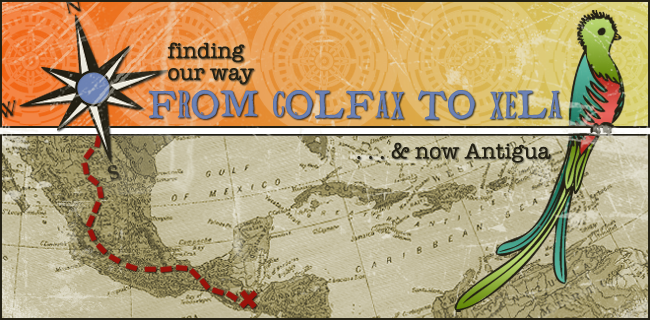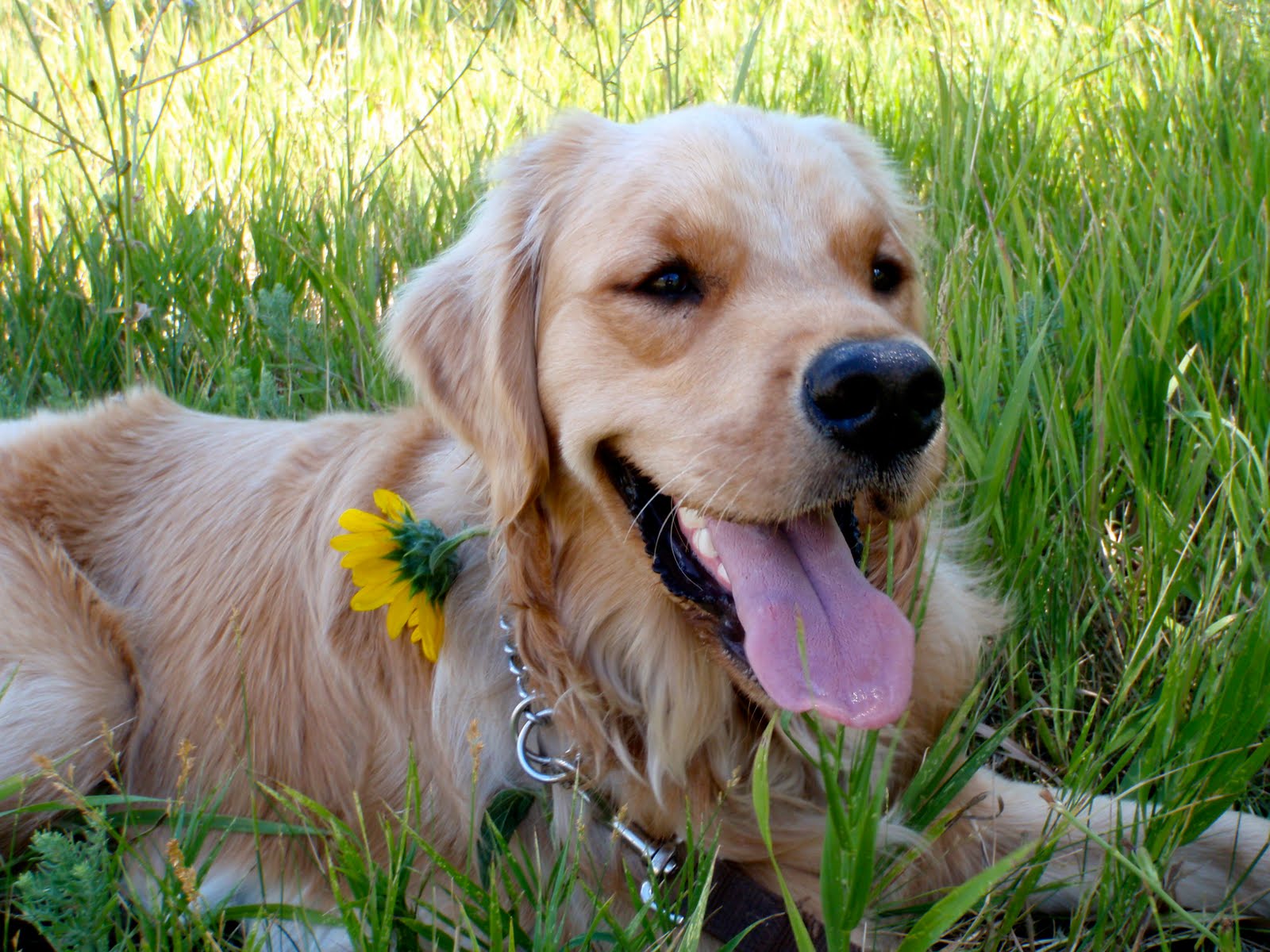Tuesday, September 30, 2008
Fuentes Georginas
2 hours to Totonicapan


Just one example of the vendors lining the streets.


The Best Coffee in the World


Sunday, September 28, 2008
Excursion to Salcaja


Along with making textiles, Salcaja is also know for an alcoholic drink they make, a sort of high ocatane sangria called caldo de frutas. It has a sweet wine taste made from rum, vanilla, suger and various fruits that are mixed together and fermented for 5 months. It is actually quite good in liquid form, but the fermented fruit is pretty potent - just look at Ben's reaction!
Salcaja is also home to the first church (Catholic) in Central America, Iglasia de San Jacinto. The church dates back to 1524. It wasn't open for us to tour the inside, but even from the outside it was interesting. Xela has the second church in Central America which is also Catholic. Considering Mexico is about 98% Catholic, we were actually surprised to learn that Guatemala has many religions, including Evangelical, Mormon, and Presbyterian. Catholicism is less than 60%.
Part of the adventure of this excursion was riding in the chicken buses and mini-buses. These are a few of our classmates from Switzerland, Iceland and America. We are actually embarrassed that we only speak 1 language fluently in comparison to the Europeans. Most of them are working on a 3rd or 4th language. They all speak English almost as well as we do. It is kind of cool that people from all these different countries can bond and converse through the use of English language. We tell ourselves everyday not to feel bad about our primary Spanish skills. At least we are here, trying to do our part in making a difference in the future of America.
The Making of Tradional Mayan Textiles
Upon our arrival we walked to a field where workers were stretching and braiding the natural string (for lack of a more sophisticted term). The man in the blue shirt explained about the process of hand tying the threads used to allow color variation in the textiles.


We then visited a Tinteria where we watched 2 guys (both who looked like teenagers) dye the material. This tinteria was for the color black only. Each color has it´s own shop. 1 person literally stamps and dances on the material in a large metal bucket filled with natural dyes, scalding hot water, and chemicals for 20 minutes so that the color absorbs into the material.
After it has cooled, it is passed off to another guy (pictured below) who rinses and twists it to get out all the excess liquid. Can you imagine doing this all day long for something less than 50 Quetzales (like $7 USD), not to mention the affect on your health?

Below is an example of what it looks like when all the little ties that are removed from the rope. How about that job? Would you want that one?


We didn´t get to see these things in action, but Ben was enamored with them. They use these bicycle wheels to wind the finished product.

After a stroll through town we were off to a another house where we watched a man doing the actual ikat weaving on a loom. He told us he works 8 hoursa day making about 7 meters of material. He makes 50Q a day as well.

Throughout Salcaja there were many tiendas selling the dyed string for weaving as well as the final product. The weavings are part of the traditional Mayan dress. It is typical for the women to wear the fabric wrapped around them like a skirt with another fabric that looks like an apron over top. Often their tops are heavily embroidered and layered under a matching cardigan. We´ll probably get pictures of the dress sooner or later, but out of respect for their beliefs (most don´t want to be photographed) we don´t have any yet.


This excursion was planned by our school and definitely worth the trip. We woudn´t have been able to do this tour ourselves as many of the places we visited were in private homes or businesses.
Life with the Roesch Familia
After a few phone calls to find out where to take us, our driver drops us off at the home of Lillian, Elvira & Isabel Roesch, 3 sisters who live in their family home with a teenage boy, Eric, the son of Elvira. The Roesch home is small, but has a room for students in the back with 2 beds....and that's about it. While the accommodations aren't really very pleasing to us (we're sleeping in a saggy double bed and have a cold shower), the family is great. Lillian seems to spend the entire day in the kitchen preparing meals. Ben absolutely loves the Guatemalan cuisine. I don't think it is all that bad either, but I seem to have gotten a stomach bug, so eating isn't all that pleasant for me.
A lot of other extended family members come and go, including an older son, grandson, other sisters, cousins and neighbors. One night this week we (like 10 of us) were all sitting around the table for cena (dinner around 8pm) when Jose (the older son) jumps up and flicks off the lights. Apparently he saw the overhead light short out. So we found a candle and a flashlight and dined in the dark. It was kind of nice. After dinner Jose crawled up into the ceiling and wearing my headlamp (that I brought just in case of an electricity outage) repaired the short. It was a funny family bonding experience.
So far these are our only photos of the family, but stay tuned for more.
Green Gardens and Tummies!


Speaking of hotels, we also changed hotels for our last night in Antigua. Posada Lazos Fuertes, where we stayed the first 2 nights was decent, but was right on a busy, loud street. It supports a good cause - Safe Passage - an organization that aides in the education of children whose parents scavenge in a Guatemala City dump. I also wasn't too thrilled about the bathroom - I'm very particular about cleanliness in my showers! So we did a little research and found Hotel Aurora - and we highly recommend it. It's no Casa Santo Domingo, but still quite nice.
 So once again, thanks to Horacio & Nicole we had another good experience. Our second night in Antigua we dined at Panza Verde (traslation - Green Tummy). Nicole told us this restaurant was really good and she was right! Antigua is know for growing avacados and it is said that the people have a green tummy from eating so many. Although we had a little difficultly finding the restaurant, it was worth the search. The atmosphere inside was amazing. There was a beautiful courtyard and live music.
So once again, thanks to Horacio & Nicole we had another good experience. Our second night in Antigua we dined at Panza Verde (traslation - Green Tummy). Nicole told us this restaurant was really good and she was right! Antigua is know for growing avacados and it is said that the people have a green tummy from eating so many. Although we had a little difficultly finding the restaurant, it was worth the search. The atmosphere inside was amazing. There was a beautiful courtyard and live music. 
Friday, September 26, 2008
A Treasure Hunt in Antigua

For a few hours, we went on a treasure hunt via directions from our friends Horacio & Nicole, who lived in Guatemala City a few years ago. We were looking for a "tienda" owned by an "hombre de Alamania" (a man from Germany) who sells "adornos para el árbol de Navidad" (Christmas tree ornaments). Our directions from Nicole were something like "with the cathedral behind you, standing in the main park, cross the park, the shop is through a cafe....and maybe there is a bookstore with a wooden bench outside" It tooks us 2 days to find (mainly because the store was closed the first day), but alas.....we struck gold...or should I say a haven of beaded adornments! The best part is....this is for you Horacio & Nicole....as soon as we told him we had friends who lived in Guatemala City a while back, he knew you! He remember that you guys worked for some water project and would visit every few weeks, looking for new ornaments! So thanks for giving us a adventure to look forward too!
Our 1st stop in Guatemala
Monday, September 15, 2008
Bienvenidos!
We're about to make a big life change by leaving our lives on Colfax Avenue and traveling to Xela, Guatemala. If you've ever dreamed of leaving it all behind and running away to another country to embrace the culture, learn the language and lend a hand to humankind, this is the place for you. We invite you to follow us to Guatemala and share in our experiences - the highs, the lows, and everything in between.
Buckle up and get ready for the ride of our lives!


























